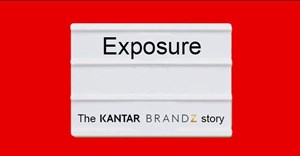Trending
Elections 2024
Jobs
- Admin Clerk Cape Town
- Wine Expert Sales Executive George
- Graphic Designer Johannesburg
- Digital Marketer Cape Town
- Baker - Commercial Bakery Vereeniging
- General Manager Vereeniging
- Front Desk Coordinator/Receptionist Vereeniging
- Freelance Graphic Designer/Web Designer/Reel Creator Cape Town
- Mid-Senior Travel Consultant Cape Town
- Partnerships and Business Development Manager Cape Town
Important lessons from challenger brands
From studying challenger brands, for example Absolut Vodka, Audi TT, Apple, Millers Genuine Draft, it is clear that they have eight credos, says Mokgwatsane.
The first is intelligent naivety. In the challenger project (which looked at challenger brands' and their success), it was found that those with very little experience, who were not boxed in by what their category stood for, were able to deliver the best results.
Intelligent naivety, said Mokgwatsane, allows a person to ask the fundamental question – why can't things be done differently?
Overlaying, where the rules of one category are adapted and applied to another, was also common among challenger brands.
Look outside the triangle
Most research is accustomed to the triangle of brand, consumer and category. Challenger brands say that that model is important but that you also need to look outside the triangle at insights of opportunity and overlay rules of one category with another.
A good example of this would be Mac make-up, said Mokgwatsane. “It took the rules of the ramp and overlaid it with the make-up category, so you had a make-up stand that played funky music a la the fashion ramp and people working for Mac dressed in black outfits as opposed to the usual sterile white outfits for the category.”
Challenger brands put the brand in to a new category, freeing themselves from the shackles of their brand.
A second credo that challenger brands have in common is that they build a lighthouse identity. Most challenger brands are going to have the consumer navigate around them and not the other way around.
A third credo is that they assume the thought leadership of the brand. What you say about yourself through representation can break convention. Locally Kulula is trying to do that. But if you are going to have brave marketing you need to follow through. “I was on a flight recently and as we landed and were taxiing toward our place of disembarkation, our Kulula air hostess started singing ‘So long, Goodbye'. Soon people stopped shuffling around and just sat and listened to her. She sang for two-and-a-half minutes. At the end she got a standing ovation. That's following through on what the brand is trying to achieve.”
Indifference is the greatest fear
The fourth credo is to be a symbol of bold re-evaluation and the fifth is sacrifice – you are going to have to sacrifice something, whether it be your target, your frequency, your distribution or your message. “Your greatest fear regarding your brand shouldn't be that it is rejected but that people are indifferent to it, that they don't even notice it.”
The sixth credo of challenger brands is that they overcommit. How far you go and how committed you are is an essential component. The seventh is to use publicity and advertising to entertain popular culture and the eighth credo is to be idea-driven. “Don't let consumers navigate what you are going to do. If you're a big brand you have the cash. If you're a small brand your currency is ideas.”
So why is any of this relevant if you're already number one? “Success makes you forget why you are successful and you become complacent. You have to think like a number two if you want to remain a number one. It's a mindset and needs to be applied in all we do.”















